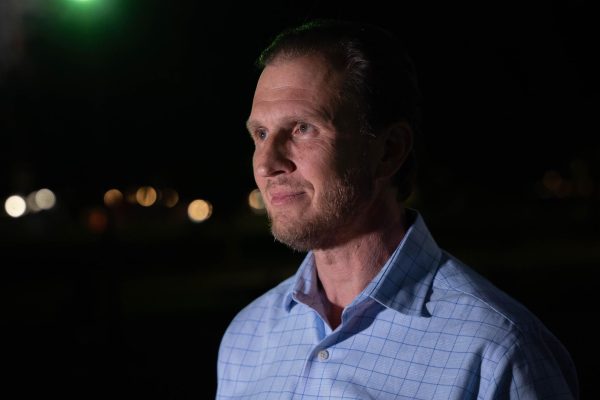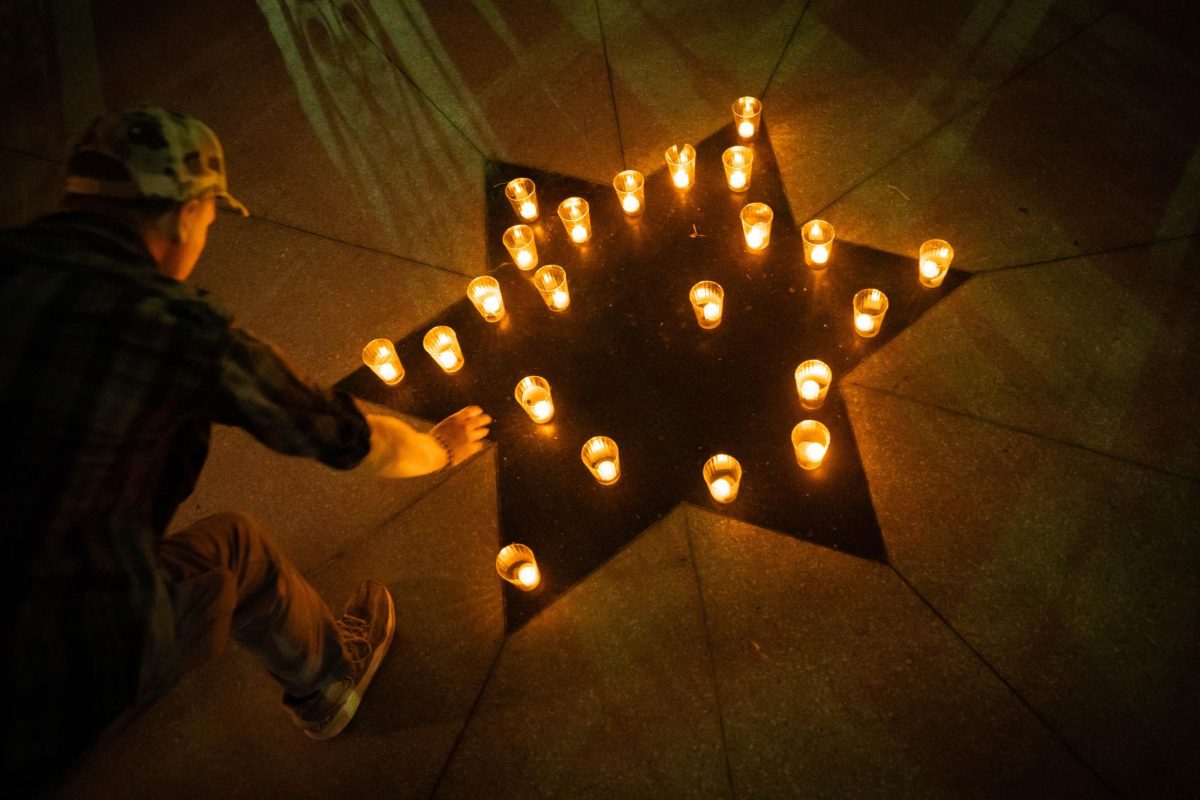On the evening of Sept. 11, members of the Emerson and the Greater Boston community gathered at the Boston Common‚Äôs Parkman Bandstand to commemorate the tragedy of 9/11 and share their personal stories of grief and healing.¬Ý
Illuminated by the flickering light of a candle in their hands, the participants solemnly watched as community members shared their experiences.¬Ý

“What you are left with is hurt, anger, fear, and for me it was isolation,” said John Talanian, who worked for Cantor Fitzgerald’s Boston office on 9/11. The company’s main office was on the top four floors of the North Tower of the World Trade Center.
“Our firm lost 658 people that day. I knew 200 of them, and a small core group of them is what I would call my brothers and sisters,” Talanian continued.
Talanian joined the vigil in 2007 and was invited to speak in it the next year.¬Ý
‚ÄúIt helped me heal,‚Äù he said, ‚ÄúI wanted to be among people that were recognizing it was very personal.‚Äù He concluded his remarks by saying, ‚ÄúIt‚Äôs important to not let the hate win. Try to be a bridge of healing.‚Äù¬Ý
The Communication Politics and Law Association (CPLA) at Emerson College organizes the vigil every year. Twenty-three years after 9/11, it is the longest-running vigil in the country.¬Ý
Three Emerson community members lost their lives in the 9/11 attack, including Jane Simpkin ‚Äò88, who was on United Airlines Flight 175; communication studies professor Myra Aronson and Sonia Puopolo were both on American Airlines Flight 11.¬Ý
Sonia‚Äôs daughter, Tita Puopolo ‚Äò97, was one of the vigil organizers. This year, she attended virtually. Tita wrote ‚ÄúSonia‚Äôs Ring,‚Äù a book about healing named after her late mother‚Äôs ring, found under the acres of molten steel in Ground Zero.¬Ý

‚ÄúIt is a ring that looks a lot like this bandstand,‚Äù said Gregory Payne, the communication studies department chair and one of the event‚Äôs organizers. He pointed at the standing crowd and invited people to share their stories.¬Ý
‚ÄúThis is for everyone who has experienced a loss,‚Äù Payne continued.¬Ý
‚ÄúI‚Äôve gained a true understanding of certain aspects of life,‚Äù said former communication studies professor Neil Harris. ‚Äú[This vigil] has made me understand the true meaning of life‚Äîsharing love and building bridges among others.‚Äù¬Ý
‚ÄúThis is a time that Emerson has pledged to come together,‚Äù Payne said. ‚ÄúRegardless of our ideologies, our religions, our political thoughts, there is one thing that brings us together, that we are human beings.‚Äù¬Ý
Communications studies professor Ken Grout concluded the vigil by reading three poems on how people interact with grief, after which the participants came together from across the edges of the bandstand and placed their candles gently on the star-shaped center.¬Ý
Once brought together, the candles‚Äô warm light brightly filled the space and revealed the faces of all who had shared their stories.¬Ý